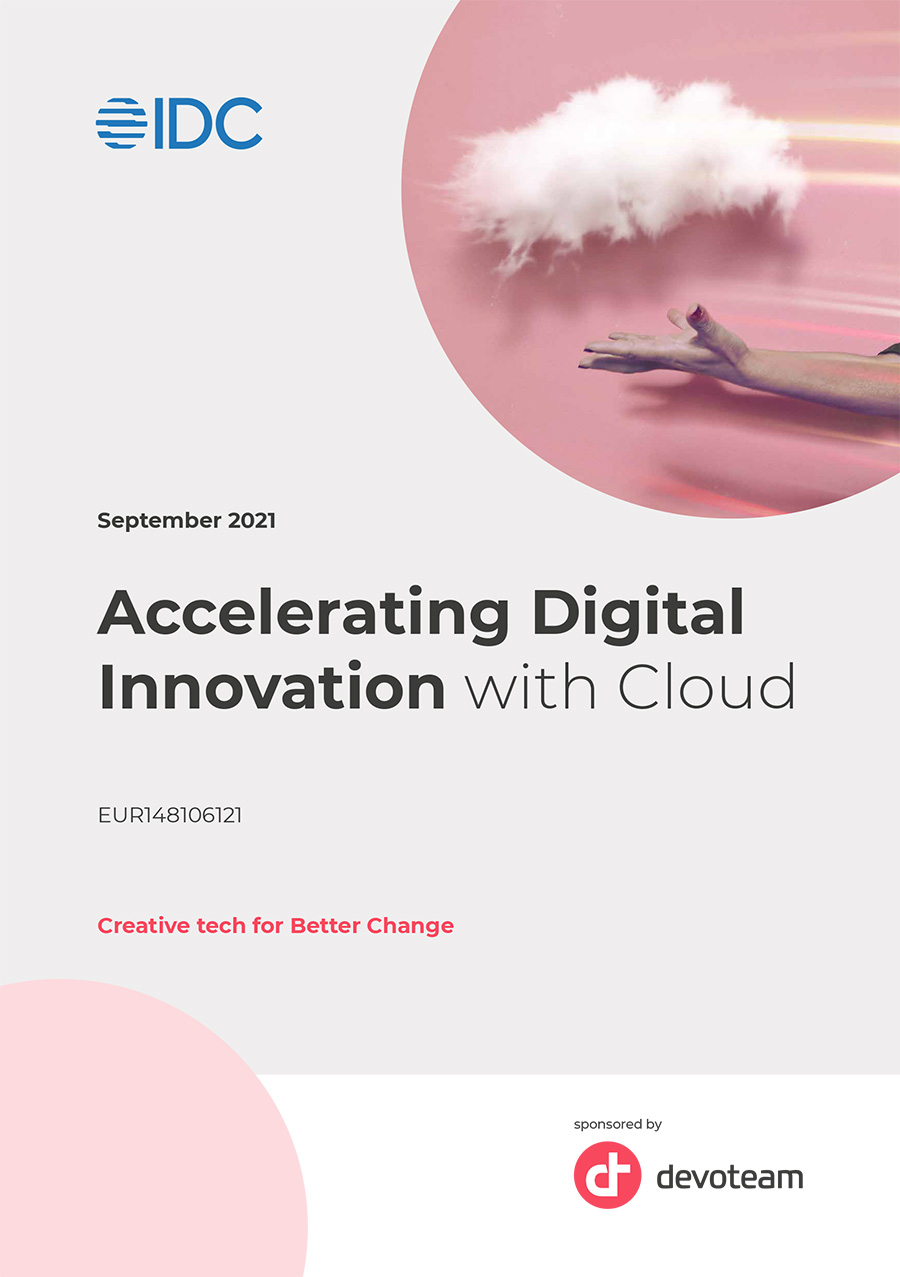Plan & Architect – Cloud Vision & Strategy
Planning and architecting for the cloud requires addressing people, process, and technology transformation aligned to the cloud operating model.
Organizations excelling in this pillar understand that one of the first steps on the cloud journey is to clearly define immediate to long-term business objectives such as business model innovation, accelerated delivery, and automation strategies. With clear outcomes set, leading organizations work backwards to plan the application and data move to the cloud, identify the skills, assess the workloads, and clearly define the wider set of people and IT capabilities needed to deliver on these strategic objectives.
Defining outcomes and the required strategic capabilities helps to ensure the cloud architecture that is right for the business whether it is hybrid cloud, multicloud, private cloud, or public cloud. This delivers on expected business outcomes.
Which Cloud Strategies Are the Cloud Innovators Following?
Cloud innovators have a higher propensity to see cloud of all types as important architectural models in their IT strategy and vision, compared to cloud experimenters and optimizers. A higher number of cloud innovators than average mention digital innovation as a key cloud priority.
Cloud innovators are anticipating their organizations will make an even more massive shift towards cloud in the next two years. As shown in Figure 8, currently around 17% of cloud innovators describe their cloud usage as “industrial and strategic with clear governance and management in place.” But 71% of cloud innovators expect their cloud usage to reach that industrial scale by 2023.
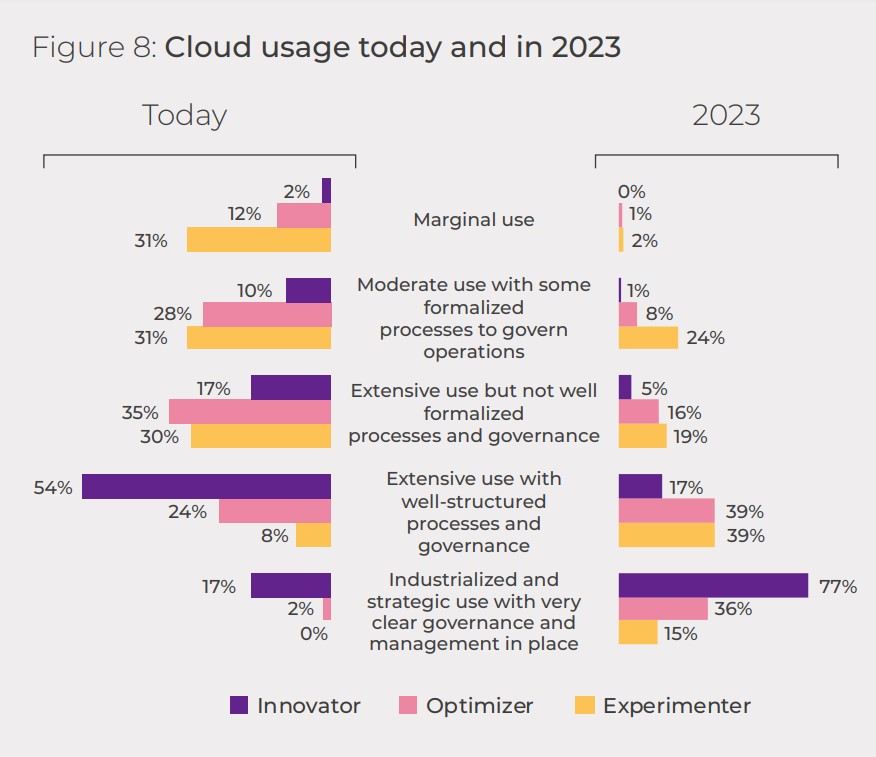
Overcoming Cloud Challenges
The innovators are also focused on overcoming strategic cloud challenges in the Plan and Architect phase. Primary challenges such as lack of solid business case or lack of boardroom buy-in are not key challenges for innovators. As they are further ahead in the journey, the key challenges they are facing are complexities and costs in migrating legacy apps and databases to the cloud, or governance, as shown in Figure 9.

Build, Secure, and Optimize – Operational Excellence in Cloud Management, Application Modernization and Security
The build, secure, and optimize pillar looks at which workloads/applications should run on which cloud provider for optimal price/performance and how to introduce cloud-native technologies like containers and APIs.
Cloud has achieved mainstream status thanks to its ability to host any workload with suitable optimizations and security policies. With the use of orchestration, automation, and analytics-driven management, leading organizations can better understand issues such as resource utilization to drive continuous optimization.
Building new applications and services on cloud-native technologies reduces the complexities of monolithic application, increases its portability, and ultimately brings agility and speed to both IT and the business.
As we are in an ever-changing world with a diverse global customer base, digital applications and services need high availability at any location while being fast, secure, scalable, and agile — all key traits of the cloud-native stack of a mature organization.
Security Priorities Remains High in Cloud Migration Journeys
Cloud security is the key foundation for cloud success, and EMEA organizations across the board prioritize cloud security and digital trust. Without cloud security and digital trust, customers and partners will not trust an organization with their data, which in turn is the foundation for new digital products and services. 39% of all respondents choose data security (DLP/CASB) as their number one cloud security priority. Beyond that, threat and vulnerability management is ranked number 2 (29%) and data sovereignty is number 3 (26%).
35% of innovators prioritize digital security and trust compared to only 25% of cloud experimenters. More than a third of cloud innovators also choose cloud citing better security and compliance, compared with 29% of total respondents.
The research also shows that 57% of all EMEA organizations and 63% of innovators chose an external partner to reinforce their cloud security capabilities.
41% of innovators rate capabilities such as hybrid/multicloud management as most important compared to 33% of average responses. A higher number of innovators cite automation and cloud-native app development as important capabilities compared with experimenters and optimizers. Innovators are also much more strategic and prefer to choose the best cloud for a given workload. Choosing the right cloud provider for the right applications is a complex process.
IDC used the Cloud Benchmark survey to test which applications organizations are hosting across the three major cloud providers,
see on the following pages.
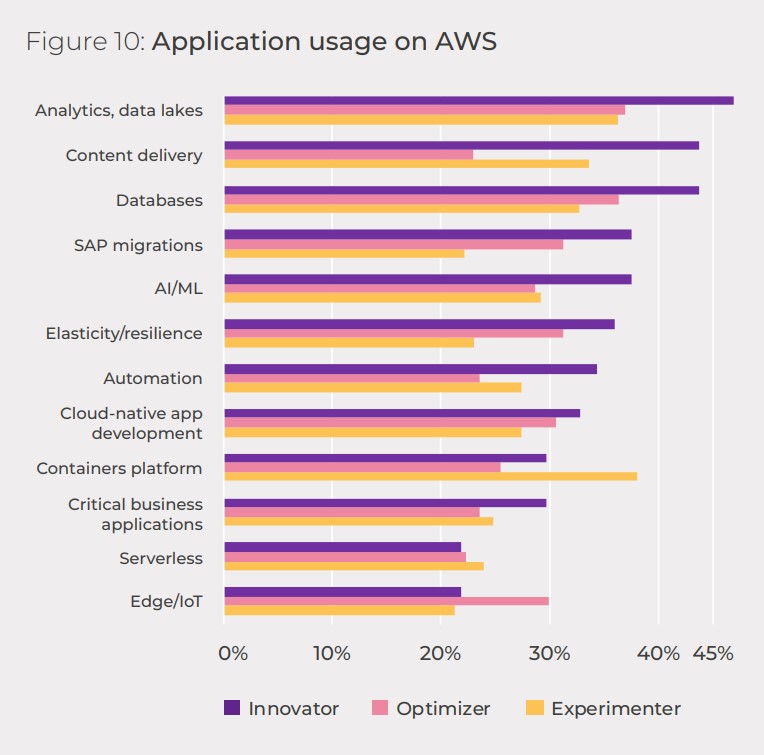
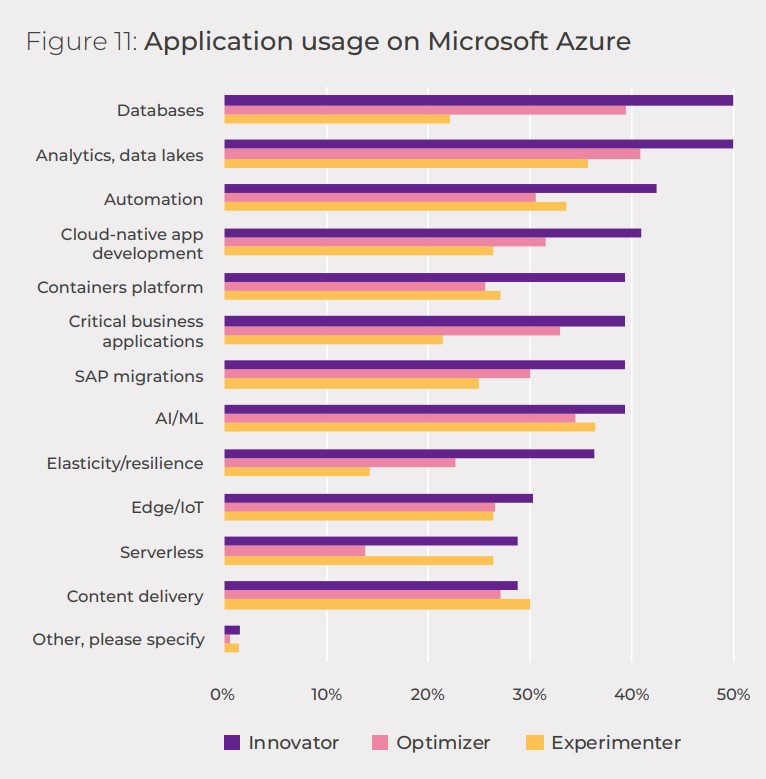
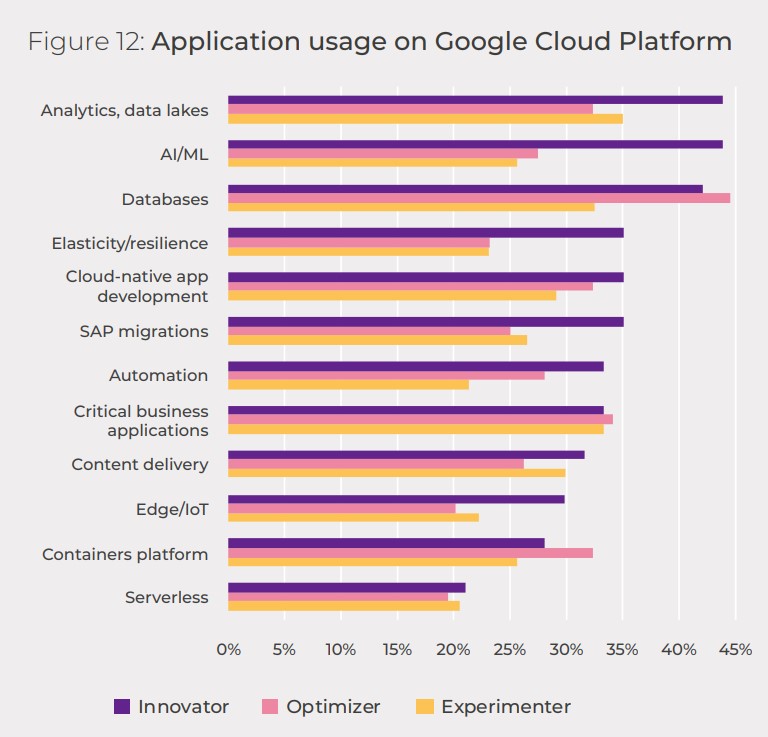
Innovate and Differentiate – Transcending Beyond Cloud as a Destination to Cloud as an Innovation-Enabler
Successful organizations are fast moving beyond seeing cloud just as a more agile infrastructure or destination for their workloads. They see it as a springboard that delivers “innovation accelerators” such as AI/ML at scale, automation, next-gen security, and integrations.
89% of innovators in the Innovate and Differentiate pillar cite that they have achieved positive business outcomes as a result of using cloud. Innovators of this pillar also cite mature business value gains such as data mining, business productivity boosts, and improving customer experiences.
The value of the cloud for these organizations lies in its ability to provide instant access at scale to the most innovative technologies and help create and deliver new digital products, services, and experiences at inspiring speed.
Innovators Capitalize on Technology Innovation More Than Optimizers or Experimenters
IDC research revealed that 58% of innovators run a container environment compared with 50% of experimenters and optimizers. All innovators implement API integration, with 60% following an API-first integration strategy with full alignment with the business and IT strategy. Only 1% of cloud experimenters and 10% of optimizers follow an API-first integration strategy, indicating a clear technical edge for innovators.
Digital innovation opens new addressable markets, drives operational efficiency, improves customer experience, and ultimately transforms the business model into an agile enterprise of the future.

Impact of Successful Cloud Strategy in Fueling Business Innovation and Benefits
The research highlights how innovative organizations are moving beyond the tactical use cases of cloud to much more strategic and transformational use of cloud. For example, 35% of Cloud Experimenters cite that each cloud team manages its own clouds in isolation compared to fewer than 1% of innovators. On the other hand, 85% of innovators have set up a cloud center of excellence to drive innovation via cloud compared to 7% of experimenters and 37% of optimizers.
Cloud innovators rank digital innovation as the top benefit of cloud followed by better security. Overall respondents ranked tactical benefits such as reduced IT complexity as number one.

Strategic Cloud Differentiators of the Future — Sustainability
Sustainability is a topic that innovators are taking very seriously, and it is one of the reasons why innovators will accelerate ahead of their competition. 60% of innovators have already put strict rules in place to choose the most sustainable supplier when issuing an RFP, compared with only 8% of experimenters. The focus is on CO2 emissions reduction across all respondents. A higher number of innovators think it is important to track production efficiency, consumption of utilities, energy sources, and supply chain energy consumption for sustainability objectives.
The initiatives around sustainability are led by the chief sustainability officer or the CEO for innovators, whereas for others it is CIO/Head of IT driving the sustainability agenda. This clearly shows that sustainability is a key strategic priority for the CEO and will impact decisions about which cloud provider to choose in the future.
